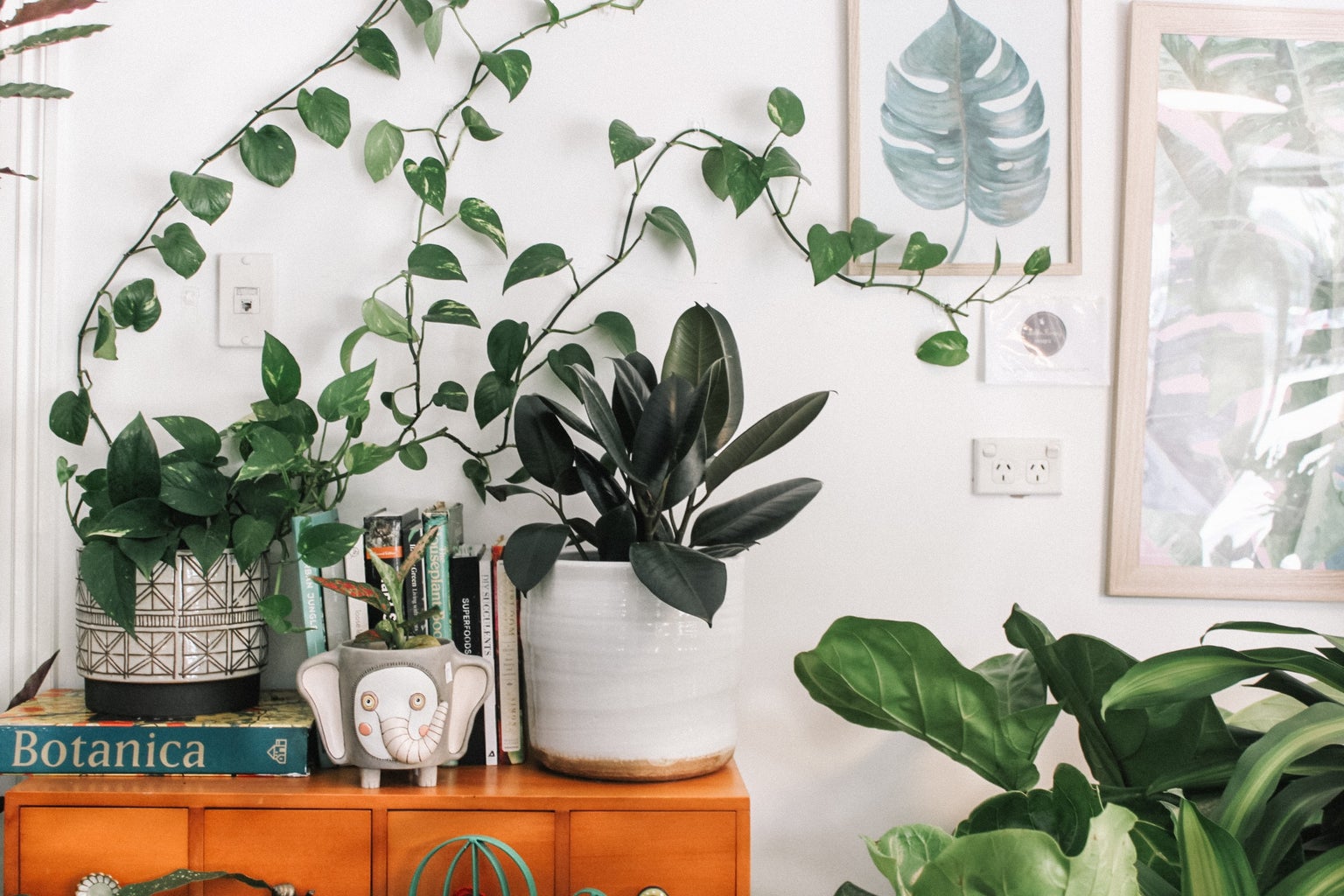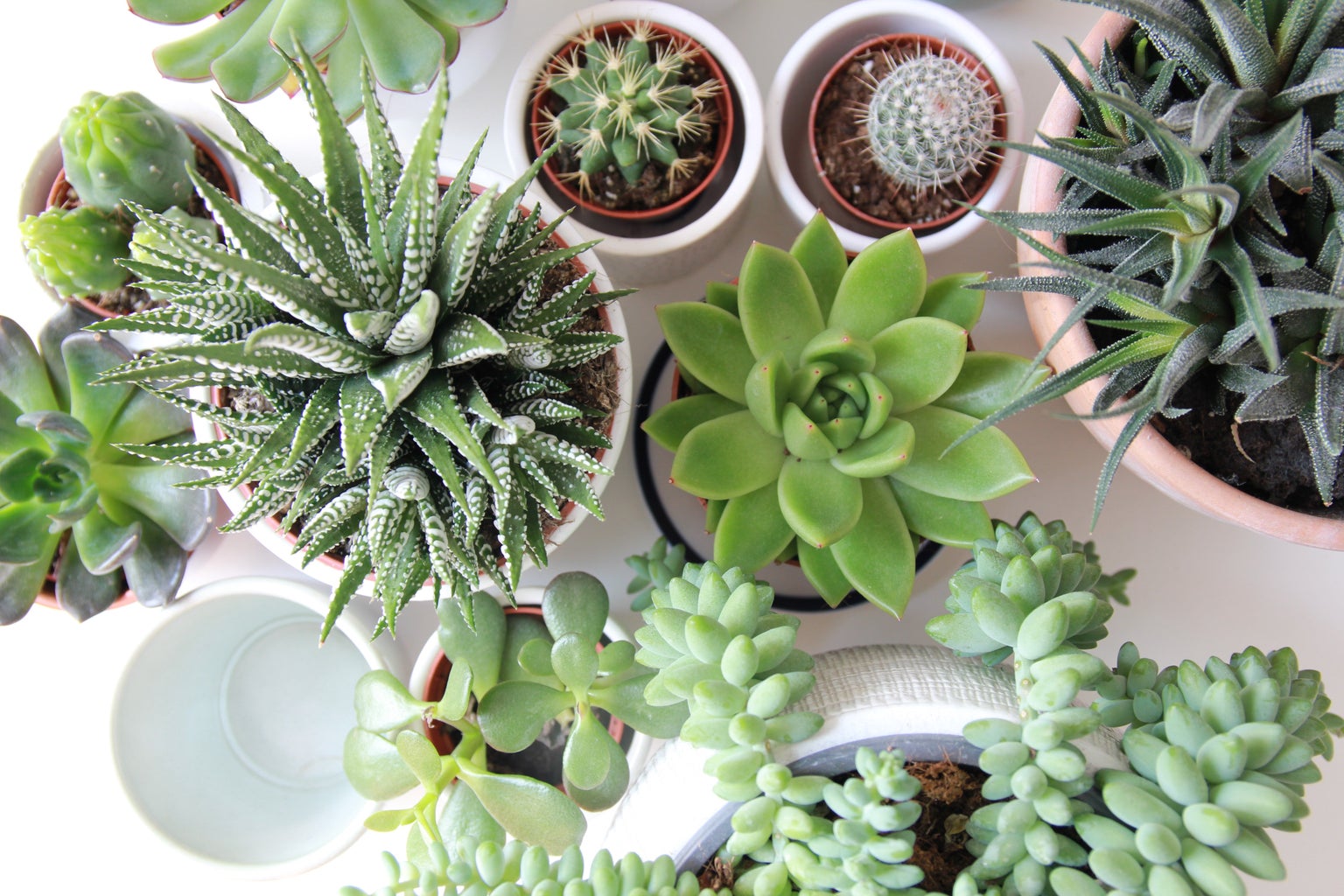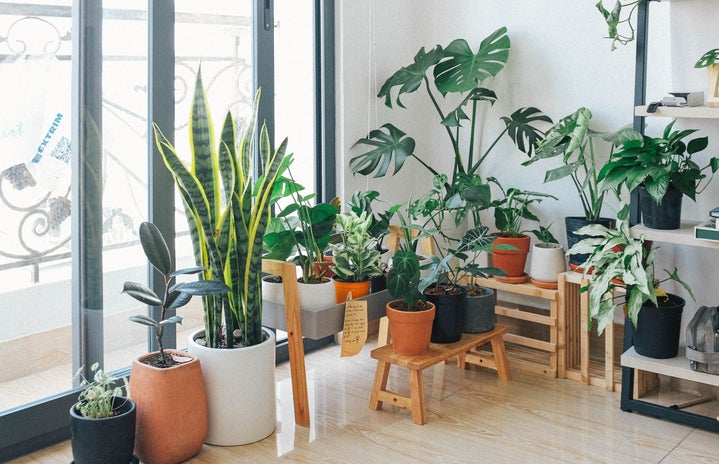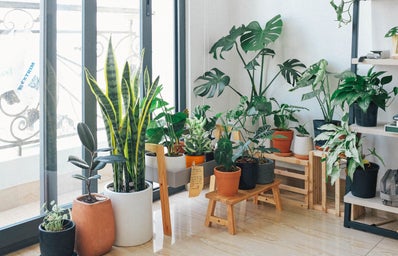We’ve all been there. You finally found the most adorable plant to put on your nightstand. You water it regularly for the first few months, but life gets busy so you start to forget. You notice the leaves beginning to brown so you pour way too much water into your poorly draining pot.
It doesn’t help. Your plant continues to wilt. You move it onto a windowsill, hoping some sunlight will revive it, but it seems to be beyond rescuing. Your heart breaks a little bit as this cute little plant withers away.
Listen, I get it. Plants are hard! They’re living things, they need to be cared for and depending on what plant you get, you can unknowingly subject yourself to a huge burden of responsibility.
Luckily, there are quite a few species of plants that will add plenty of life to your space without demanding a whole lot of attention. Here are just a few of these low-maintenance houseplants.
Snake Plant

Sansevieria trifasciata, more commonly known as the snake plant, is one of the most common house plants, likely because of how easy it is to care for. These babies are durable, persistent and can grow in just about any conditions.
Though they thrive in indirect sunlight, they can also easily adapt to survive with almost any level of light, meaning it’s the perfect plant to liven up that shady corner of your bedroom (though rotating it into the sun for short periods of time can also be beneficial).
A general rule of thumb for most plants is to water them when the soil is dry (seems easy enough, right?), and for the snake plant this generally means about every two to four weeks, though it can be even longer depending on the plant.
Snake plants also like looser, well-draining soil, so most succulent or cactus potting mixes will do the trick. If you don’t have a potting mix, try mixing some small rocks into your soil, or even crushing up some small styrofoam packing peanuts to give the roots more space to grow.
Spider Plant

Like the snake plant, the spider plant (chlorophytum), can adapt to survive in almost any conditions — though they do best in bright indirect sunlight — and they also prefer loose, well-aerated soil mixes.
Spider plants do require more frequent watering, but generally once a week is enough to keep the plant kicking.
Once a spider plant matures, it begins to produce small bunches of chutes, which can be trimmed off the main branch and planted in their own pots to grow into its own full-sized plant! This makes the spider plant one of the most cost-effective houseplants if you’re looking to build up a collection, and the repotted plantlets make great gifts!
Pothos

If you want a viney houseplant, the pothos plant is for you. This easy-to-care-for plant is also known as the Devil’s Ivy because it’s virtually impossible to kill.
You might be noticing a common theme in theme in these low-maintenance plants — well-draining soil and indirect sunlight — and the pothos plant is no different.
It’s best to water the pothos when the soil is completely dry, which is typically every 1-2 weeks. A better indicator of when to water, though, is the plant itself. Plant care website The Spruce says “Let the plant tell you when to water — when it starts to droop, it needs a good drink.” What could be easier than a plant that literally tells you when to water it?
Haworthia

Generally most cacti and succulents are fairly easy to grow, but I’m a personal fan of the haworthia, also called the zebra plant because of the white spots that accumulate on its spikes as it grows.
These adorable plants — you guessed it — thrive in fast-draining soil and bright indirect sunlight.
Because of its water-retaining abilities as a succulent, the haworthia only needs to be watered around once a month, or even every other month depending on your pot size and climate. Soil should get completely dry in between waterings, and overwatering can be detrimental.
There are so many plant species out there that are easy to care for and will add a breath of life to any space that needs it; these are just a few of my favorites. There’s truly no feeling more gratifying than keeping a plant healthy and thriving, so I bid you the best of luck in your next horticultural adventure!


